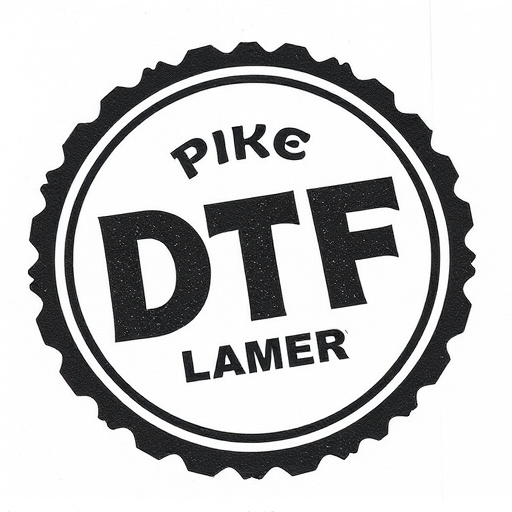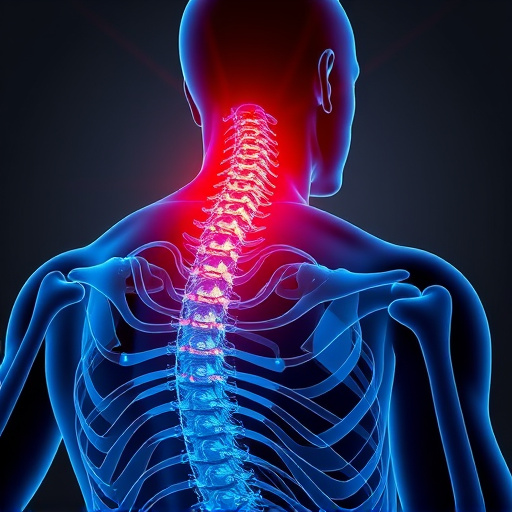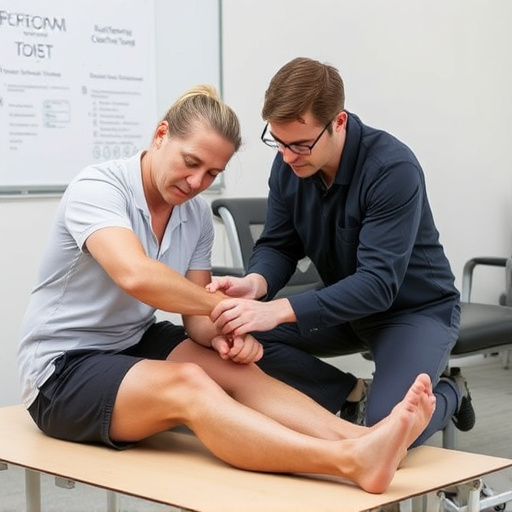Structured chronic pain management programs integrate physical therapy, cognitive behavioral therapy, and alternative treatments to significantly reduce pain, improve quality of life, and decrease healthcare utilization. These programs empower individuals with coping strategies, enhance mental well-being, and promote independence through therapeutic exercises and education. By focusing on joint/back pain relief and holistic approaches, these programs foster emotional state improvements and cost savings for patients and healthcare systems.
Chronic pain management programs have evolved to offer comprehensive, long-term solutions for patients. This article explores the profound impacts of structured approaches on managing persistent pain. Through these programs, individuals can expect significant reductions in pain levels and improvements in quality of life. Moreover, they empower patients with enhanced coping strategies, boosting psychological well-being.
Additionally, by promoting efficient healthcare delivery and cost savings, these programs offer a sustainable path forward for chronic pain sufferers.
- Long-Term Pain Reduction and Quality of Life Improvements
- Enhanced Coping Strategies and Psychological Well-being
- Reduced Healthcare Utilization and Cost Savings
Long-Term Pain Reduction and Quality of Life Improvements

The long-term outcomes of structured chronic pain management programs are promising, with significant reductions in pain levels and improvements in quality of life for participants. These programs often incorporate a multi-faceted approach, combining various therapeutic techniques such as physical therapy, cognitive behavioral therapy, medication management, and alternative treatments like shockwave therapy for pain. The integration of these strategies not only helps to manage symptoms but also addresses the underlying causes of chronic pain, leading to lasting benefits.
One notable aspect of successful chronic pain management is the emphasis on mobility improvement through chiropractic treatment and other manual therapies. By enhancing spinal health and joint function, these interventions can break the cycle of pain and disability, enabling individuals to regain control over their lives. As a result, participants often experience improved mental well-being, increased independence, and a higher overall quality of life.
Enhanced Coping Strategies and Psychological Well-being

Structured chronic pain management programs have been shown to significantly enhance individuals’ coping strategies and psychological well-being. By incorporating various therapeutic modalities such as cognitive-behavioral therapy, mindfulness practices, and stress management techniques, these programs equip participants with effective tools to navigate the challenges of living with chronic pain. This enhanced resilience fosters a sense of control over one’s condition, leading to improved mental health outcomes.
Moreover, integrating post accident rehabilitation and focusing on joint pain relief or back pain relief as part of these structured programs can further contribute to overall well-being. Through tailored exercises and personalized care plans, individuals not only experience physical symptom reduction but also witness improvements in their emotional state. This holistic approach ensures that participants not only manage their pain effectively but also regain a higher quality of life, enhancing their psychological resilience and overall satisfaction.
Reduced Healthcare Utilization and Cost Savings

One of the significant long-term benefits of structured chronic pain management programs is the notable reduction in healthcare utilization. By implementing evidence-based strategies, these programs empower individuals to take control of their pain and overall well-being. Through a combination of therapeutic exercises, physical therapy, and comprehensive patient education, participants learn effective coping mechanisms and self-management skills. As a result, they often experience substantial improvements in their quality of life and a significant decrease in reliance on medical interventions.
This shift towards chronic pain relief and improved self-care translates directly into cost savings for both patients and healthcare systems. By reducing the frequency and intensity of healthcare visits, hospital stays, and prescription medication use, structured management programs can lead to substantial financial benefits. This is particularly beneficial for individuals who have struggled with chronic pain for extended periods, as it offers a more sustainable and cost-effective solution compared to ongoing emergency room visits or intensive medical treatments.
Structured chronic pain management programs offer long-lasting benefits, including significant pain reduction, enhanced quality of life, improved coping strategies, and better psychological well-being. These programs also lead to decreased healthcare utilization and substantial cost savings over time, making them a valuable asset in managing this complex condition. By implementing such structured approaches, individuals with chronic pain can achieve sustainable improvements and an overall higher level of functioning.














